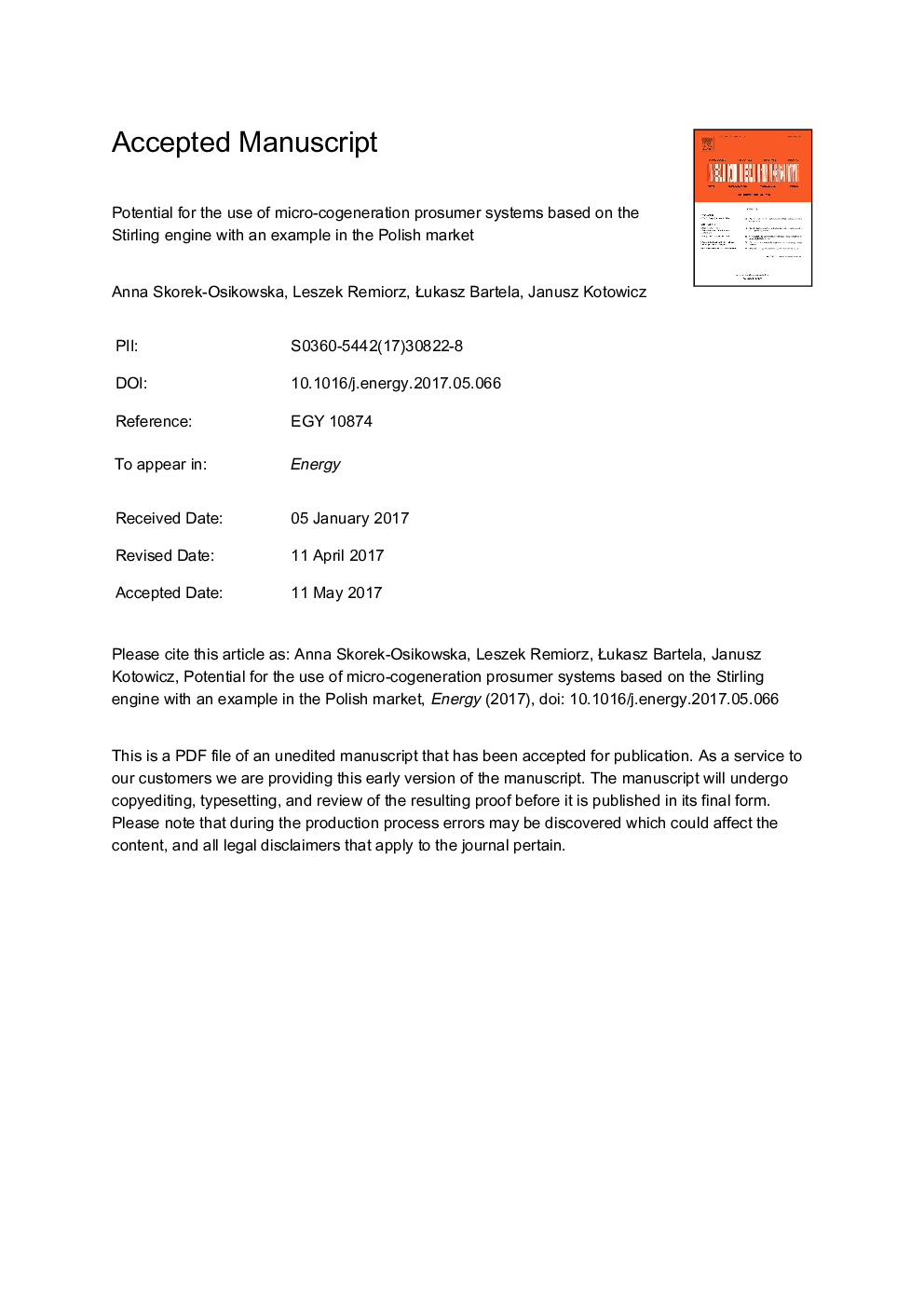| Article ID | Journal | Published Year | Pages | File Type |
|---|---|---|---|---|
| 5476538 | Energy | 2017 | 64 Pages |
Abstract
Among micro-cogeneration (μCHP) systems, an interesting solution is one based on the Stirling engine, which is the main object of interest of this paper. First, a numerical model of the engine was built based on Schmidt analysis. The model indicated the possible range of improvements resulting in increased efficiency or increased power. Next, the potential for the use of a μCHP system based on the Stirling engine was evaluated. Data from real-time, long-term measurements in a building located in Poland were taken as the input values for the analysis. The results show that the considered solution can meet the electricity and heat demands of single-family houses throughout the year; however, heat storage system is required to optimize the operation of the device and extend the operation of the system to produce electricity. Depending on the local mechanisms, electricity storage may also be needed. The environmental effect of the considered system is positive, provided that renewable energy sources do not constitute an alternate solution. The application of μCHP in buildings also decreases the exploitation cost, which depends mainly on the heat and electricity demand, price of electricity purchased and sold to the grid, price of natural gas and existing support mechanisms.
Related Topics
Physical Sciences and Engineering
Energy
Energy (General)
Authors
Anna Skorek-Osikowska, Leszek Remiorz, Åukasz Bartela, Janusz Kotowicz,
